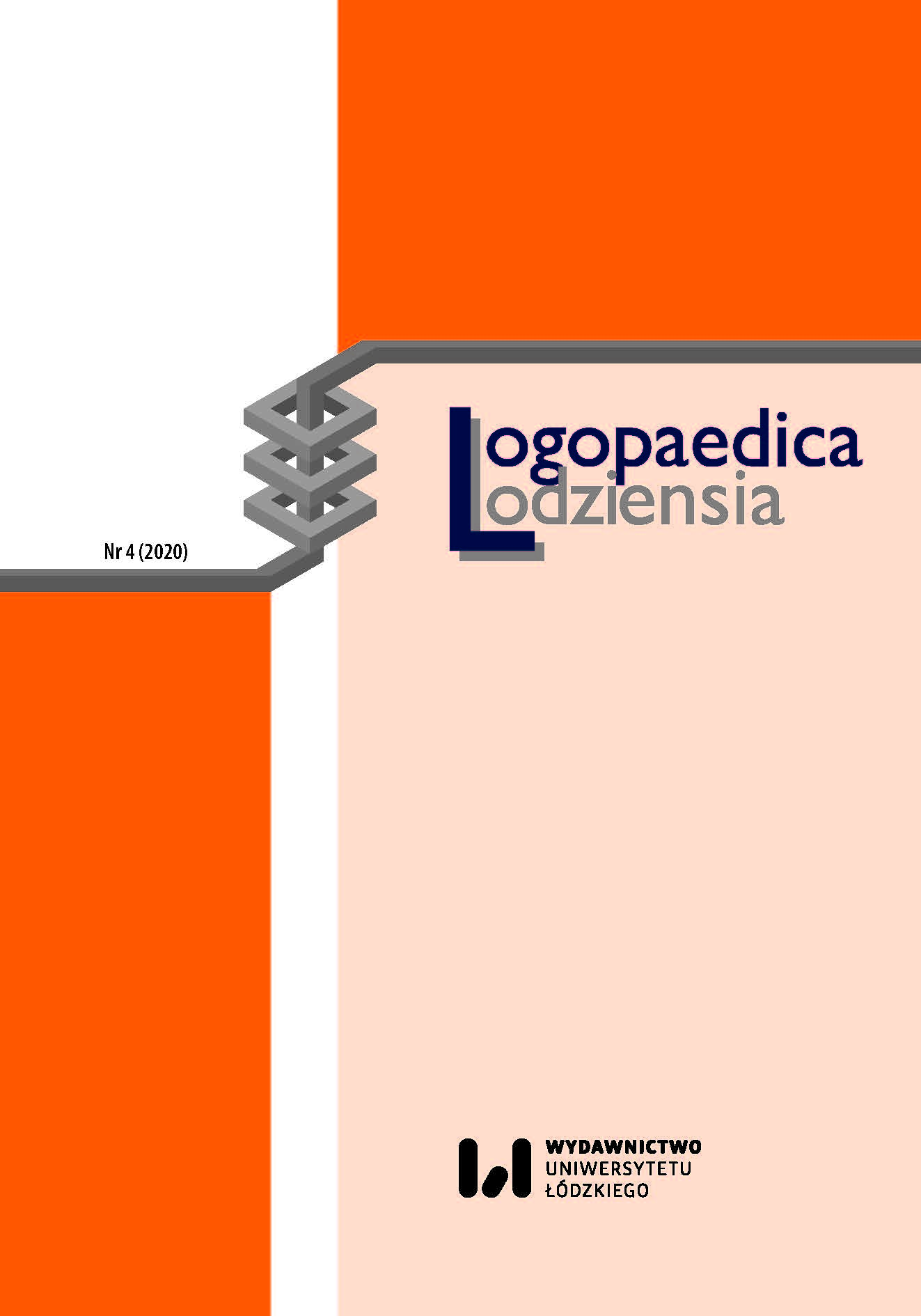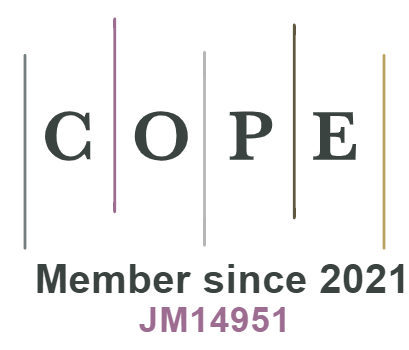A Detailed Summary of Speech Pathology Assessment and Intervention of A Minimally Verbal Australian Child with Autism Spectrum Disorder
DOI:
https://doi.org/10.18778/2544-7238.04.11Keywords:
autism spectrum disorder (ASD), complex communication needs, minimally verbal, speech and language pathology, treatment approaches, Naturalistic Developmental Behavioural Interventions (NDBIs), family centred practiceAbstract
Speech and language pathologists have an important role to play in the treatment of individuals with Autism Spectrum Disorder. There exists a large body of evidence regarding the efficacy of assessment protocols and treatment approaches for individuals with ASD. There is an ever-growing need for clinicians to adopt holistic, family-centred clinical practices, and this is particularly important within ASD, where clinical presentations are often varied. This study described the assessments and intervention programs used by one SLP in the treatment of a minimally verbal seven-year-old male with a diagnosis of autism spectrum disorder. It found that the utilisation of multiple treatment programs may be required within therapy to provide individuals on the autism spectrum with high-quality, family-centred intervention. Further research into the development of clinically standardized procedures for selecting speech pathology interventions to promote client-centred practices is recommended.
Downloads
References
Aldred C., Green J., Adams C., 2004, A new social communication intervention for children with autism: Pilot randomized controlled treatment study suggesting effectiveness, “Journal of Child Psychology and Psychiatry”, vol. 45(8), pp. 1420–1430.
Google Scholar
DOI: https://doi.org/10.1111/j.1469-7610.2004.00338.x
American Psychiatric Association, 2013, Diagnostic and statistical manual, 5th ed., Washington: APA.
Google Scholar
DOI: https://doi.org/10.1176/appi.books.9780890425596
Baio J., Wiggins L., Christensen D. L., Maenner M. J., Daniels J., Warren Z., Durkin M. S., 2018, Prevalence of autism spectrum disorder among children aged 8 years – autism and developmental disabilities monitoring network, 11 sites, United States, 2014, “MMWR Surveillance Summaries”, vol. 67(6), pp. 1–23.
Google Scholar
DOI: https://doi.org/10.15585/mmwr.ss6706a1
Bal V. H., Katz T., Bishop S. L., Krasileva K., 2016, Understanding definitions of minimally verbal across instruments: Evidence for subgroups within minimally verbal children and adolescents with autism spectrum disorder, “Journal of Child Psychology and Psychiatry”, vol. 57(12), pp. 1424–1433.
Google Scholar
DOI: https://doi.org/10.1111/jcpp.12609
Barnes-Holmes Y., McHugh L., Barnes-Holmes D., 2004, Perspective-taking and Theory of Mind: A relational frame account, “The Behavior Analyst Today”, vol. 5(1), pp. 15–25.
Google Scholar
DOI: https://doi.org/10.1037/h0100133
Blanc R., Adrien J.-L., Roux S., Barthélémy C., 2005, Dysregulation of pretend play and communication development in children with autism, “Autism”, no. 9, pp. 229–245.
Google Scholar
DOI: https://doi.org/10.1177/1362361305053253
Bloom L., 1974, Talking, understanding, and thinking: Developmental relationship between receptive and expressive language, https://academiccommons.columbia.edu/doi/10.7916/D88S4VMC (accessed: 20.02.2019).
Google Scholar
Bono M. A., Daley T., Sigman M., 2004, Relations among joint attention, amount of intervention and language gain in autism, “Journal of Autism and Developmental Disorders”, vol. 34(5), pp. 495–505.
Google Scholar
DOI: https://doi.org/10.1007/s10803-004-2545-x
Bott C., Farmer R., Rohde J., 1997, Behaviour problems associated with lack of speech in people with learning disabilities, “Journal of Intellectual Disability Research”, vol. 41(1), pp. 3–7.
Google Scholar
DOI: https://doi.org/10.1111/j.1365-2788.1997.tb00671.x
Brignell A., Chenausky K. V., Song H., Zhu J., Suo C., Morgan A. T., 2018, Communication interventions for autism spectrum disorder in minimally verbal children, “Cochrane Database of Systematic Reviews”, no. 11, https://www.cochranelibrary.com/cdsr/doi/10.1002/14651858.CD012324.pub2/pdf/CDSR/CD012324/CD012324_abstract.pdf (accessed: 20.02.2019).
Google Scholar
DOI: https://doi.org/10.1002/14651858.CD012324.pub2
Camaioni L., Perucchini P., Bellagamba F., Colonnesi C., 2004, The role of declarative pointing in developing a theory of mind, “Infancy”, vol. 5(3), pp. 291–308.
Google Scholar
DOI: https://doi.org/10.1207/s15327078in0503_3
Charman T., 2003, Why is joint attention a pivotal skill in autism?, “Philosophical Transactions of the Royal Society of London. Series B: Biological Sciences”, vol. 358(1430), pp. 315–324.
Google Scholar
DOI: https://doi.org/10.1098/rstb.2002.1199
Cochet H., Jover M., Rizzo C., Vauclair J., 2017, Relationships between declarative pointing and theory of mind abilities in 3-to 4-year-olds, “European Journal of Developmental Psychology”, vol. 14(3), pp. 324–336.
Google Scholar
DOI: https://doi.org/10.1080/17405629.2016.1205975
Diehl S. F., 2003, The SLP’s role in collaborative assessment and intervention for children with ASD, “Topics in Language Disorders”, vol. 23(2), pp. 95–115.
Google Scholar
DOI: https://doi.org/10.1097/00011363-200304000-00004
Drager K., Light J., McNaughton D., 2010, Effects of AAC interventions on communication and language for young children with complex communication needs, “Journal of Pediatric Rehabilitation Medicine”, vol. 3(4), pp. 303–310.
Google Scholar
DOI: https://doi.org/10.3233/PRM-2010-0141
Frost K. M., Hong N., Lord C., 2017, Correlates of adaptive functioning in minimally verbal children with autism spectrum disorder, “American Journal on Intellectual and Developmental Disabilities”, vol. 122(1), pp. 1–10.
Google Scholar
DOI: https://doi.org/10.1352/1944-7558-122.1.1
Ganz J. B., 2015, AAC interventions for individuals with autism spectrum disorders: State of the science and future research directions, “Augmentative and Alternative Communication”, vol. 31(3), pp. 203–214.
Google Scholar
DOI: https://doi.org/10.3109/07434618.2015.1047532
Ganz J. B., Earles-Vollrath T. L., Heath A. K., Parker R. I., Rispoli M. J., Duran J. B., 2012, A meta-analysis of single case research studies on aided augmentative and alternative communication systems with individuals with autism spectrum disorders, “Journal of Autism and Developmental Disorders”, no. 42, pp. 60–74.
Google Scholar
DOI: https://doi.org/10.1007/s10803-011-1212-2
Holmes E., Willoughby T., 2005, Play behaviour of children with autism spectrum disorders, “Journal of Intellectual & Developmental Disability”, no. 30, pp. 156–164.
Google Scholar
DOI: https://doi.org/10.1080/13668250500204034
Howlin P., Magiati I., 2017, Autism spectrum disorder: Outcomes in adulthood, “Current Opinion in Psychiatry”, vol. 30(2), pp. 69–76.
Google Scholar
DOI: https://doi.org/10.1097/YCO.0000000000000308
Huang C. Y., Yen H. C., Tseng M. H., Tung L. C., Chen Y. D., Chen K. L., 2014, Impacts of autistic behaviors, emotional and behavioral problems on parenting stress in caregivers of children with autism, “Journal of Autism and Developmental Disorders”, vol. 44(6), pp. 1383–1390.
Google Scholar
DOI: https://doi.org/10.1007/s10803-013-2000-y
Iadarola S., Pérez-Ramos J., Smith T., Dozier A., 2019, Understanding stress in parents of children with autism spectrum disorder: a focus on under-represented families, “International Journal of Developmental Disabilities”, vol. 65(1), pp. 20–30.
Google Scholar
DOI: https://doi.org/10.1080/20473869.2017.1347228
Jung S., Sainato D. M., 2013, Teaching play skills to young children with autism, “Journal of Intellectual and Developmental Disability”, vol. 38(1), pp. 74–90.
Google Scholar
DOI: https://doi.org/10.3109/13668250.2012.732220
Kasari C., Brady N., Lord C., Tager‐Flusberg H., 2013, Assessing the minimally verbal school‐aged child with autism spectrum disorder, “Autism Research”, vol. 6(6), pp. 479–493.
Google Scholar
DOI: https://doi.org/10.1002/aur.1334
McKean K., Phillips B., Thompson A., 2012, A family-centred model of care in paediatric speech-language pathology, “International Journal of Speech-Language Pathology”, vol. 14(3), pp. 235–246.
Google Scholar
DOI: https://doi.org/10.3109/17549507.2011.604792
Moss P., Mandy W., Howlin P., 2017, Child and adult factors related to quality of life in adults with autism, “Journal of Autism and Developmental Disorders”, vol. 47(6), pp. 1830–1837.
Google Scholar
DOI: https://doi.org/10.1007/s10803-017-3105-5
Murphy C., Barnes‐Holmes D., Barnes‐Holmes Y., 2005, Derived manding in children with autism: Synthesizing Skinner’s verbal behavior with relational frame theory, “Journal of Applied Behavior Analysis”, vol. 38(4), pp. 445–462.
Google Scholar
DOI: https://doi.org/10.1901/jaba.2005.97-04
Murray E., McCabe P., Ballard K. J., 2015, A randomized controlled trial for children with childhood apraxia of speech comparing rapid syllable transition treatment and the Nuffield Dyspraxia Programme – Third Edition, “Journal of Speech, Language, and Hearing Research”, vol. 58(3), pp. 669–686.
Google Scholar
DOI: https://doi.org/10.1044/2015_JSLHR-S-13-0179
Paul R., Campbell D., Gilbert K., Tsiouri I., 2013, Comparing spoken language treatments for minimally verbal preschoolers with autism spectrum disorders, “Journal of Autism and Developmental Disorders”, vol. 43(2), pp. 418–431.
Google Scholar
DOI: https://doi.org/10.1007/s10803-012-1583-z
Pickles A., Anderson D. K., Lord C., 2014, Heterogeneity and plasticity in the development of language: A 17‐year follow‐up of children referred early for possible autism, “Journal of Child Psychology and Psychiatry”, vol. 55(12), pp. 1354–1362.
Google Scholar
DOI: https://doi.org/10.1111/jcpp.12269
Plesa Skwerer D., Jordan S. E., Brukilacchio B. H., Tager-Flusberg H., 2016, Comparing methods for assessing receptive language skills in minimally verbal children and adolescents with autism spectrum disorders, “Autism”, vol. 20(5), pp. 591–604.
Google Scholar
DOI: https://doi.org/10.1177/1362361315600146
Rieske R. D. (ed.), 2019, Handbook of Interdisciplinary Treatments for Autism Spectrum Disorder, Switzerland: Springer.
Google Scholar
DOI: https://doi.org/10.1007/978-3-030-13027-5
Sandbank M., Bottema-Beutel K., Crowley S., Cassidy M., Dunham K., Feldman J. I., Woynaroski T. G., 2020, Project AIM: Autism intervention meta-analysis for studies of young children, “Psychological Bulletin”, vol. 146(1), pp. 1–29.
Google Scholar
DOI: https://doi.org/10.1037/bul0000215
Self T. L., Coufal K., Parham D. F., 2010, Allied healthcare providers’ role in screening for autism spectrum disorders, “Journal of Allied Health”, vol. 39(3), pp. 165–174.
Google Scholar
Snodgrass M. R., Stoner J. B., Angell M. E., 2013, Teaching conceptually referenced core vocabulary for initial augmentative and alternative communication, “Augmentative and Alternative Communication”, vol. 29(4), pp. 322–333.
Google Scholar
DOI: https://doi.org/10.3109/07434618.2013.848932
Sundberg M. L., Michael J., 2001, The benefits of Skinner’s analysis of verbal behavior for children with autism, “Behavior Modification”, vol. 25(5), pp. 698–724.
Google Scholar
DOI: https://doi.org/10.1177/0145445501255003
Tager‐Flusberg H., Kasari C., 2013, Minimally verbal school‐aged children with autism spectrum disorder: The neglected end of the spectrum, “Autism Research”, vol. 6(6), pp. 468–478.
Google Scholar
DOI: https://doi.org/10.1002/aur.1329
Vismara L. A., Rogers S. J., 2008, The Early Start Denver Model: A case study of an innovative practice, “Journal of Early Intervention”, vol. 31(1), pp. 91–108.
Google Scholar
DOI: https://doi.org/10.1177/1053815108325578
Warren S. F., Kaiser A. P., 1986, Incidental language teaching: A critical review, “Journal of Speech and Hearing Disorders”, vol. 51(4), pp. 291–299.
Google Scholar
DOI: https://doi.org/10.1044/jshd.5104.291
Williams A. L., McLeod S., McCauley R. J., 2010, Interventions for Speech Sound Disorders in Children, Baltimore: Brookes Publishing Company.
Google Scholar
Williams P., Stephens H., 2004, Nuffield dyspraxia programme, Windsor: The Miracle Factory.
Google Scholar
World Health Organization, 2007, International Classification of Functioning, Disability, and Health: Children & Youth Version: ICF-CY, Geneva: WHO.
Google Scholar
Downloads
Published
How to Cite
Issue
Section
License

This work is licensed under a Creative Commons Attribution-NonCommercial-NoDerivatives 4.0 International License.












